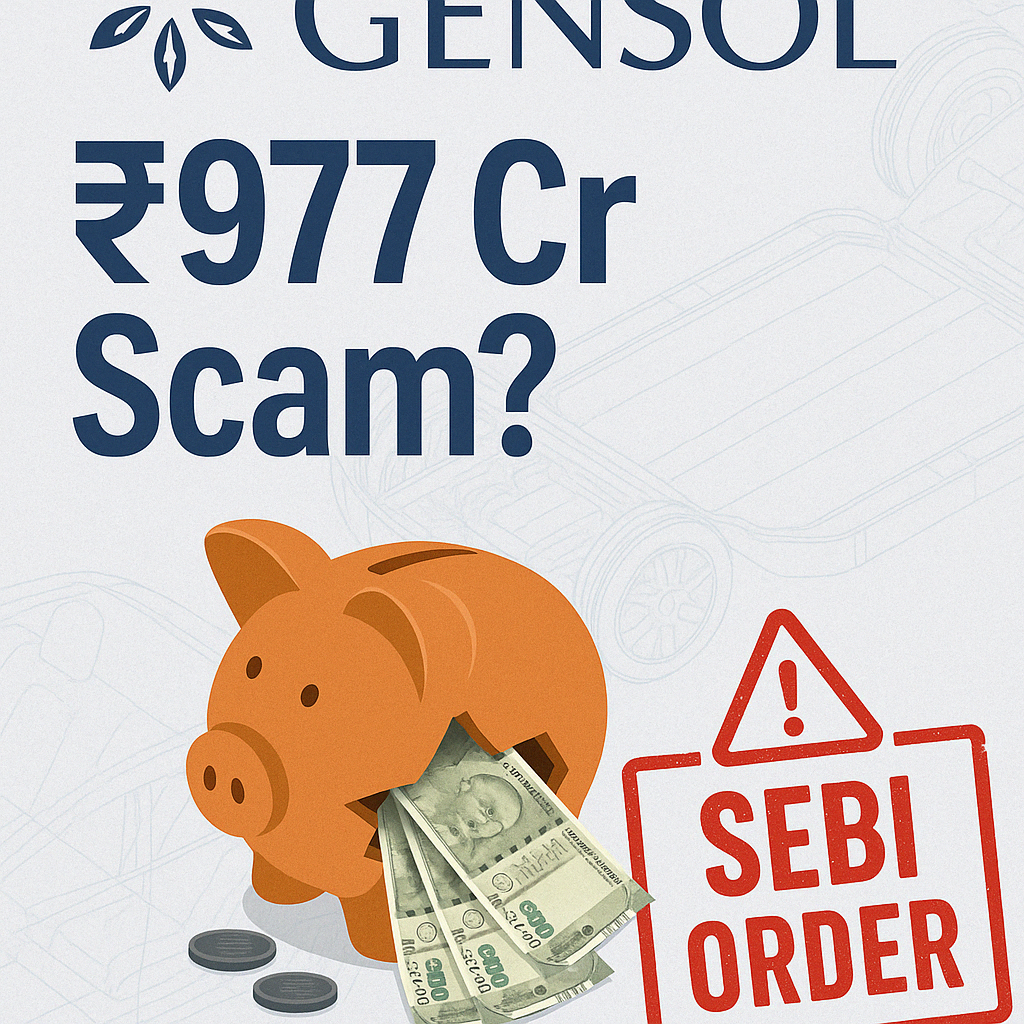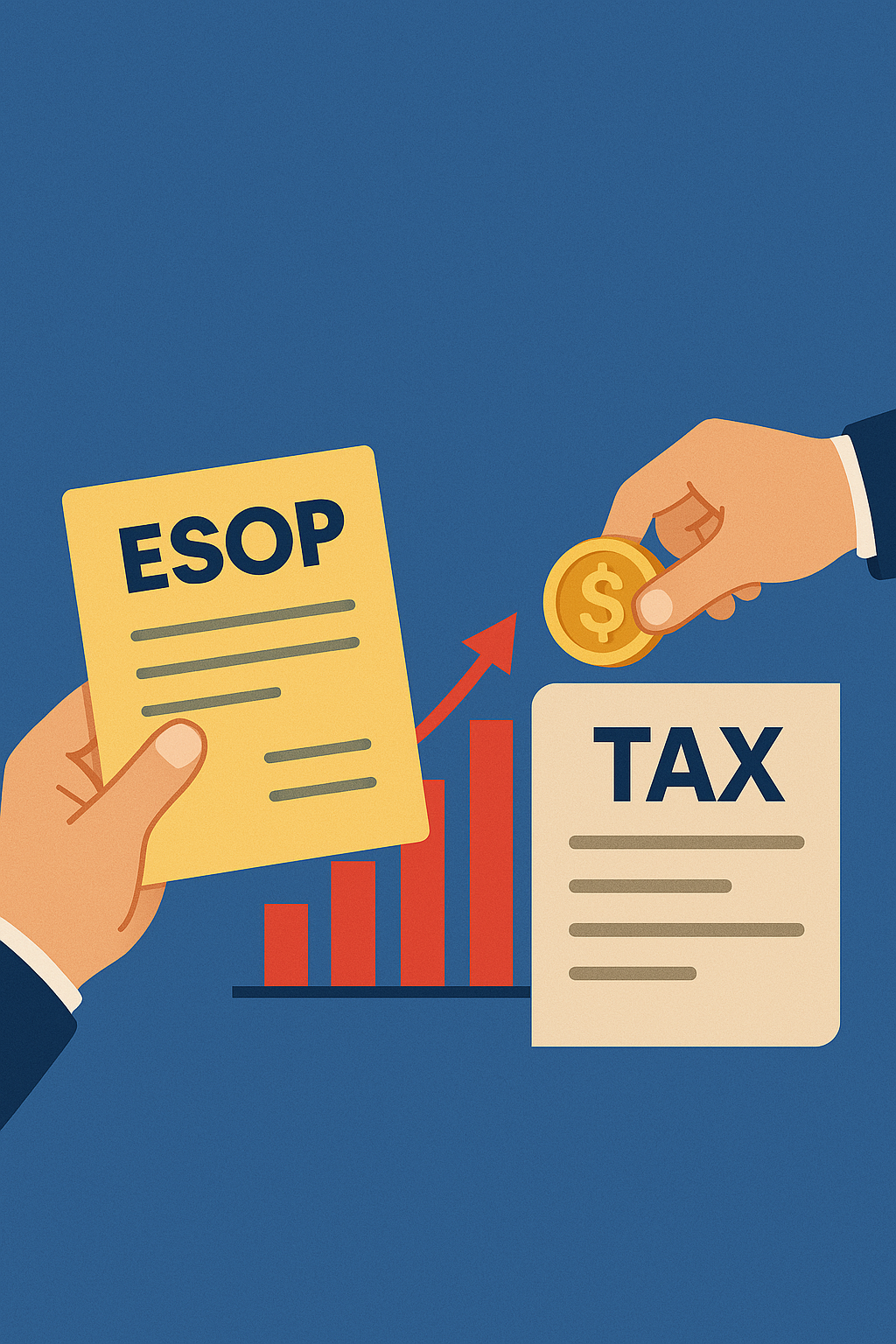Tax Advantages of ESOPs: What Employers and Employees Need to Know
Tax Advantages of ESOPs: What Employers and Employees Need to Know
A steady salary covers everyday expenses, but long-term wealth often comes from owning assets that grow over time. For many employees, startups are now bridging this gap through Employee Stock Option Plans (ESOPs), offering them an opportunity to own a part of the company they work for.
This approach not only helps employees build wealth but also strengthens their bond with the organization. ESOPs create a win-win situation for both employees and employers by aligning individual and company success.
With startups and even established companies increasingly offering ESOPs as part of their compensation packages (CTC), they are becoming an important way for employees to build wealth.
In 2023, ESOP buybacks and liquidity in India touched nearly $802 million, rising from $440 million in 2021 and $200 million in 2022. Understanding how ESOPs work, why they are gaining popularity, and their tax rules have become important for both employees and employers.
What Are ESOP’s?
An employee stock option plan or ESOP is a benefit that allows company employees to buy company shares at a fixed price, which is lower than the market price. However, employees cannot buy these shares immediately. There is a particular period for them to become eligible to buy the shares, which is called the vesting period.
After the vesting period, employees can buy the shares at a fixed price, known as the exercise price. The buying of company shares must be done within a specific period, which is called the exercise period.
Companies or startups offer ESOPs to employees to retain them for a longer time and motivate them to work harder to grow financially if the company’s value increases.
Getting ESOP shares is exciting, but many employees get confused when taxes are deducted while buying or selling them. Understanding these tax rules can save both money and stress later. Here’s how they are taxed in our country
How ESOP’s Are Taxed In India?
ESOPs are taxed in two different ways because two different types of income are involved, that is when buying the shares and selling the shares; here is the breakdown of them:
At the time of Exercise :
After completion of the vesting period, the employee buys company ESOPs, which are often lower than the Fair Market Value (FMV) on the exercise date. The difference between the FMV and the exercise price is considered a perquisite and is taxable as part of the employee's salary income in the year of exercise.
The employer calculates this taxable amount and deducts Tax Deducted at Source (TDS) on it. This amount is also reflected in the employee’s Form 16 and is included as part of the total income from salary while filing the income tax return.
A small example for better understanding
Mr. A is granted 1,000 ESOPs with an exercise price of ₹50 per share. On March 1, 2025, he buys (exercises) these shares when the Fair Market Value (FMV) is ₹90 per share.
How the Taxable Perquisite is Calculated:
- Exercise Price (Fixed Price to Buy): ₹50 per share
- FMV (Market Value on Exercise Date): ₹90 per share
- Taxable Perquisite (Benefit Value): ₹90 - ₹50 = ₹40 per share
- Total Perquisite Value: ₹40 * 1,000 shares = ₹40,000
This ₹40,000 is treated as salary income for the Financial Year (FY) 2024-25 and will be taxed as per the employee’s income tax slab rate.
Taxation at the Time of Sale:
After buying ESOP shares, if an employee decides to sell them after leaving the company, the profit made on the sale is taxed as Capital Gains. The tax rate of capital gains depends upon the duration for which the shares were held before selling. Here is a table of how ESOPs are taxed when the employee sells them.
|
Type of Capital Gain |
Holding Period |
Tax Rate |
|
Short-Term Capital Gains (STCG) |
Sold within 12 months of buying |
15% on profit |
|
Long-Term Capital Gains (LTCG) |
Sold after 12 months of buying |
10% on gains exceeding ₹1 lakh in a financial year |
Mr. A exercised his ESOPs and bought 1,000 shares at ₹50 per share.
- Total cost of buying the shares: ₹50,000 (1,000 shares * ₹50).
After holding the shares for 18 months, he sells all 1,000 shares at ₹150 per share.
- Total sale value: ₹2,00,000 (1,000 shares * ₹200 per share).
- Profit (Capital Gain): ₹2,00,000 - ₹50,000 = ₹1,50,000
Since Mr. A held the ESOP shares for more than a year, they are classified under Long-Term Capital Gains (LTCG).
The total profit from the sale is ₹1,50,000, out of which ₹1,00,000 is tax-free as per LTCG exemption rules. The remaining ₹50,000 is taxable at 10%, resulting in a tax liability of ₹5,000.
Tax Advantages of ESOPs for Employers
Companies offering ESOPs also enjoy several tax advantages that can reduce costs and improve business performance. Here are they:
- Tax Savings for the Company: When companies issue ESOPs, they can be recorded as a business expense in the company’s profit and loss statement. This helps reduce the company’s taxable income.
- Better Employee Retention: ESOPs encourage employees to stay with the company for a longer period, reducing costs related to hiring and training new employees.
- Increase in Employee Productivity: When employees own a part of the company, they develop a sense of ownership. This motivates them to perform better, which can positively impact the company’s growth and valuation.
Difference between ESOP and RSU
RSU is another popular way companies offer equity ownership of the company. Here is the difference between ESOPs and RSUs:
|
Point of Difference |
ESOP (Employee Stock Option Plan) |
RSU (Restricted Stock Unit) |
|
What does the employee get? |
Right to buy shares at a fixed price in the future. |
Shares are given for free after a certain period. |
|
Does the employee pay? |
Employee pays to buy shares (Exercise Price). |
The employee pays nothing and gets shares free. |
|
How are they taxed? |
Exercise: FMV - Exercise Price (Salary Income) Sale: Sale Price - FMV (Capital Gains) |
If an employee does not pay, shares are given for free. |
How to Reduce ESOP Tax Burden?
An employee can reduce their tax burden by choosing the right time to sell their shares, especially when the company’s share price is stable or low. Holding the shares for more than 12 months after buying them qualifies as a profit for long-term capital gains tax, which is lower than short-term tax rates.
Employees working in eligible startups can defer paying tax on ESOPs for up to 5 years or until they leave the company or sell the shares, whichever is earlier.
It is always better to consult a tax professional before making ESOP decisions to ensure proper tax planning and avoid unexpected tax liabilities.
ESOP Tax Compliance for Employers
Companies issuing ESPOs must follow all rules to avoid penalties.TDS must be deducted from the perquisite value when employees exercise their options. This amount should be reflected in Form-16 as part of the employee's salary.Companies must get the fair market value of the shares from a registered valuer to calculate the tax correctly. Startups that want to offer tax deferral to employees must check if they meet the government rules.
Conclusion
ESOPs give employees a chance to own company shares, helping them build wealth if the company grows. For companies, ESOPs reduce tax through expense deductions, improve employee retention, and boost productivity.
However, both employees and employers must carefully plan for taxes. Employees should understand tax at exercise and sale, while companies must ensure proper TDS deduction and accurate share valuation. Proper planning and compliance can help both sides maximize the financial benefits of ESOPs.
FAQ’s
Is ESOP taxable for employers?
No, employers do not have to pay taxes directly when they give ESOPs to employees. But, the cost of giving ESOPs can be treated as a business expense, which helps reduce the company’s taxable income.
What are the tax advantages of an ESOP?
The main tax advantage for companies is that the cost of ESOPs is shown as an expense in their profit and loss statement. This lowers the company’s taxable income, reducing the tax it needs to pay.







Sarah Williams
February 13, 2025This blog provided an excellent overview of stock market strategies. The section on risk management was particularly helpful for beginners like me!
Rachel Adams
February 13, 2025The tips on identifying undervalued stocks were incredibly useful. I feel more confident in making investment decisions now.